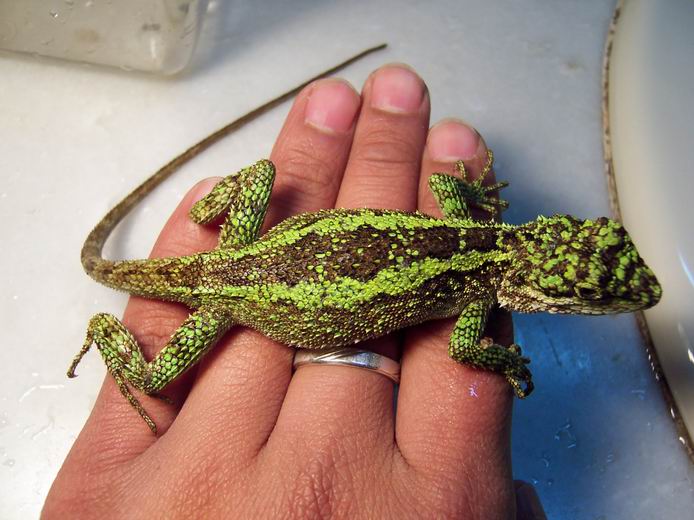This is Scientific American — 60-Second Science. I'm Karen Hopkin.
Got a minute?
They say that wearing stripes can make you look thinner. Well, lizards don't care about looking svelte. But their stripes might help them avoid getting caught by a hungry predator—and not by camouflage. No, it may be that the stripes make them look like they're moving slower than they really are, messing up the predators' timing. That's according to a report in the journal Royal Society Open Science.
Gopal Murali at the Indian Institute of Science Education Research got interested in the question of why so many lizards sport stripes while perusing hundreds of images of the conspicuously decorated critters.
"Surprisingly when we looked into the literature we did not find any direct experimental evidence for the role of striped coloration in lizards."
Seems such eye-catching coloration would make the bearers easier for predators to spot in the wild. So Murali wondered whether bright stripes might create a sort of optical illusion, one that would disorient predators and maybe get them to grab a lizard's tail rather than a more vital body part.
"Since it is well known that the tail of lizards can be easily lost and most of the predators are known to attack the head or body of lizards, we thought that the purpose of contrasting stripes on the body of lizards in motion might actually trick predators to attack the tail which doesn't cost much for the lizards when its life is at risk."

But does such stripy subterfuge really work that way? To test the idea, Murali could not change the colors of actual animals to see whether racing stripes can really save a lizard's hide, more so than solid colors or random blotches. And he knew he couldn't convince live predators to try to capture fake lizard models. So he did the next best thing.
"We carried out the experiment using humans as surrogate predators and asked them to play a game on a touch screen where they attack the virtual lizards with different color patterns."
Murali had more than 150 volunteers lunge for rectangular prey on a touch screen. He suggested that they aim for the “head”…the region at the front of the rectangle based on which way it was moving. Some rectangles had stripes along their fronts. Others had spots or had stripy bottoms.
Turns out the volunteer predators had a tougher time catching the virtual prey that was striped on top than any of the other variations. And when the hunters made any contact it tended to be at the tail. Because, Murali determined, the effect of the stripes was to make the lizards appear slower than they actually were.
"The findings are analogous to the striped pattern being a force field which prevents predators from attacking the most important body parts and hence redirecting the attacks to the tail."
Leaving more lizards alive, to flee another day.
Thanks for listening Scientific American — 60-Second Science Science. I'm Karen Hopkin.












